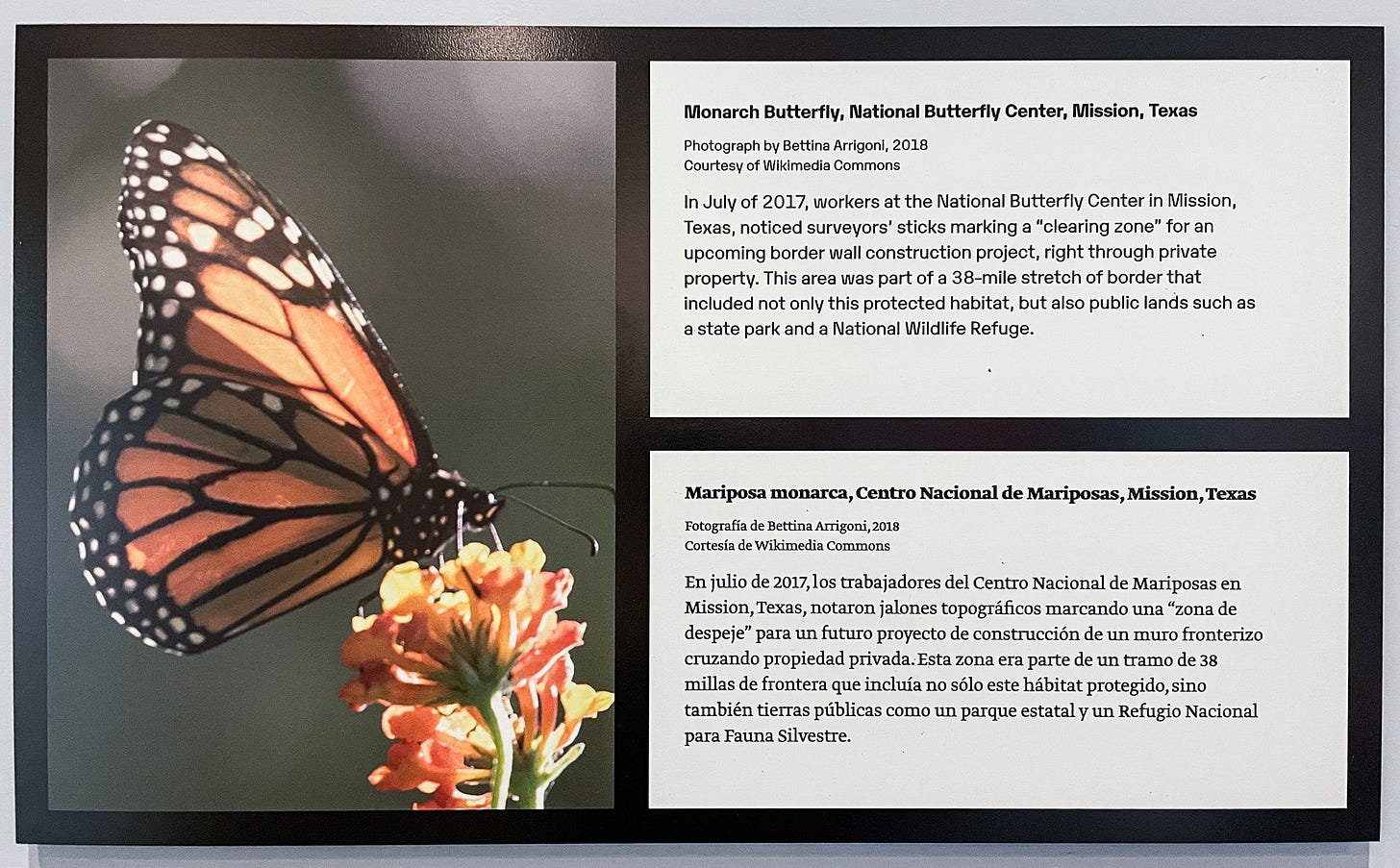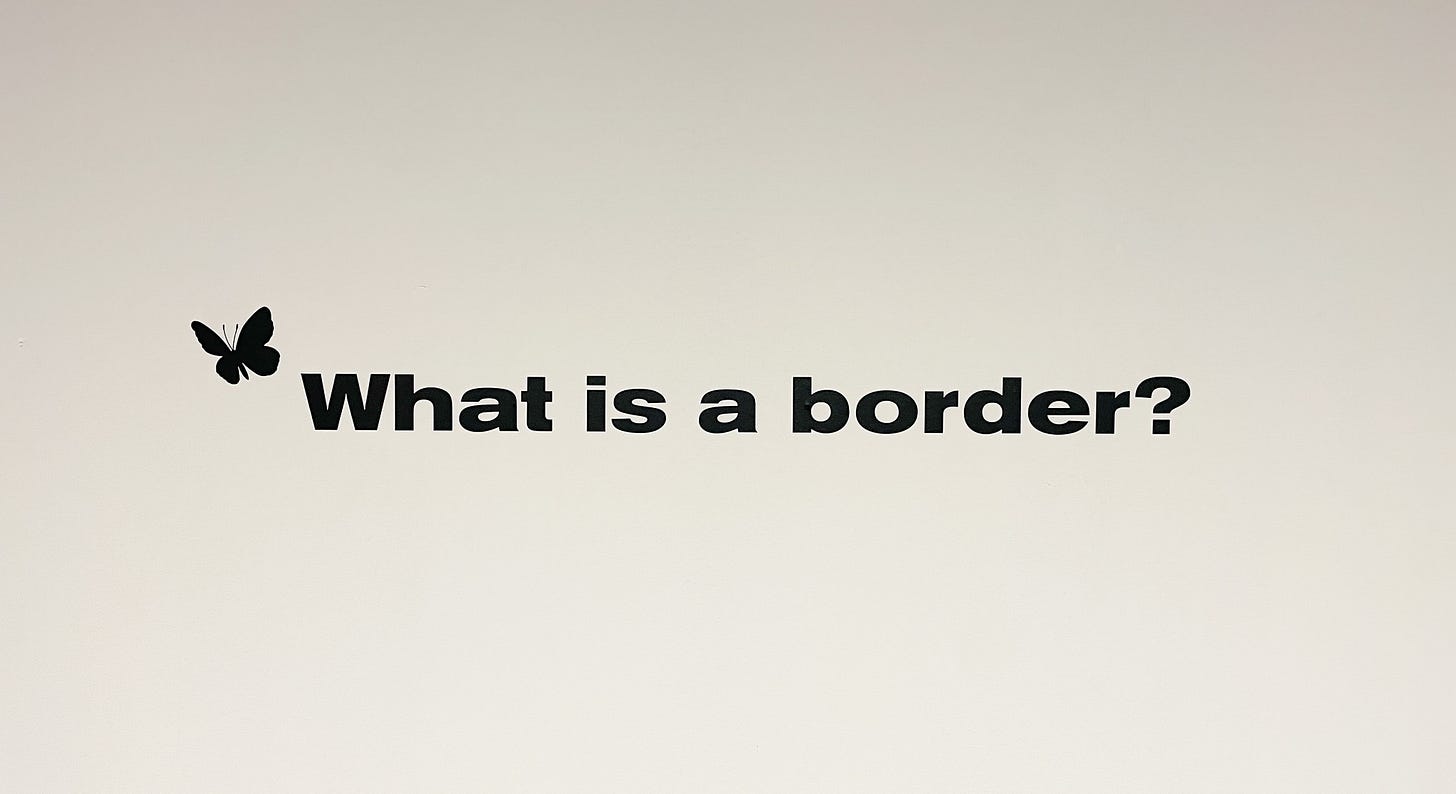Visit the US-Mexico Border Wall Exhibit at the National Building Museum in Washington, D.C.
This installation featuring historical photographs, miniature architectural models, and maps is as close as you can get to the border inside the beltway, but it is only on display until July 3.
I don’t know how else to express the sincerity of this one conviction I have: I desperately wish more people were aware of, and regularly visited, the National Building Museum.
I stumbled upon it myself by happenstance one day while conducting archival work in Washington, D.C., and was instantly transfixed, as most people are the first time they see it, by the four enormous columns that hold up the roof of the red-brick building that sits just west of Georgetown law school and just north of the DC court of appeals.
Although called a “museum”, I often describe the National Building Museum—to people who have never heard of it (which is very many people) and who suddenly realize that they are being proselytized to by a madman—as a kind of center for architectural history and innovation.
To give you an idea of what I mean, during my first visit to the NBM I spent the majority of my time in an exhibit on the history of, wait for it, parking garages. The exhibit was filled with images of early parking garages (including a variety of experimental ones that didn’t work, worked but were torn down, or were simply never built in the first place), enormous table-top models of garages, including the twin parking towers of Marina City in Chicago, and cultural commentary on the role of the car in shaping our cities.
There is really nothing else like it.
My love for the NBM was confirmed recently when I visited just to see the exhibit called “The Wall / El Muro: What is a Border Wall?” curated by Sarah Leavitt, who is now at the Capital Jewish Museum. Having recently returned from an intensive two-month trip along the US-Mexico border, I was eager to see how the border wall could be brought to the nation’s capital.
TL;DR: I give it five stars. ⭐⭐⭐⭐⭐
The exhibit is a tasteful and detailed look at the evolution of the US-Mexico border wall from the 1800s to today, and also puts the US-Mexico border into conversation with the growth of borders around the world since the fall of the Berlin Wall 30 years ago. I would characterize the exhibit as basically what you would learn in an essential unit of a university course in political geography, migration, or globalization, but with the benefit that you can wander around and look at the Big Ideas expressed in a more creative and interactive way.
The exhibit accomplishes this immersive educational effect using a variety of media and methods, including historical photographs, postcards and maps; video media; miniature sculptures of the various border markers used over the years; spoken word stories of migrants and children; and reproductions of key documents just to name a few.
Edit: Note that my fellow geographer Jared Margulies created the soundscape installation in the exhibit, which struck me when I heard it but I didn’t mention it in the version of the newsletter that went out. He also wrote about this project for Geopolitics in an article titled “Sounding Out Borderscapes: A Sonic Geography of the US-Mexico Border at Otay Mountain, California“. (See how cool geography is??)
As a geographer, I feel responsible to emphasize that the exhibit is magnificently geographic. The border is painted on the floor and shows cities on both sides of the border, emphasizing those cross-border connections. The maps are excellent, including the historical ones from the 1770s and 1870s (not shown here), to the river change map (colorful one below) and the immigration institutions map (red one below) shown here.







The exhibit also includes a reference to the work of Marianna Treviño-Wright and the National Butterfly Center, which I referenced in my previous post about the the shoddy private border fence in south Texas. You may notice that throughout the exhibit, butterflies are featured on all of the open-ended questions that frame the exhibit, which speaks both to the indifference that nature has towards the idea of human borders as well as the damaging effects that borders have on nature once those ideas about borders materialize in the landscape.
“The Wall / El Muro” is on display until July 3, 2023. More information about the exhibit is available on the museum’s website here. If you’re in the DC area, don’t miss it. It’s well worth the time.
Support public scholarship.
Thank you for reading. If you would like to support public scholarship and receive this newsletter in your inbox, click below to subscribe for free. And if you find this information useful, consider sharing it online or with friends and colleagues. I maintain a barebones site at austinkocher.com and I share immigration data, news, and research on Mastodon (@austinkocher), Twitter (@ackocher), and Instagram (@austinkocher). You can see my scholarly work on Google Scholar here.







Austin, if you don't already have a copy, I recommend "The American Wall" by Maurice Sherif. It is big, heavy and expensive. Also essential for border nerds like us. https://www.thriftbooks.com/w/the-american-wall-from-the-pacific-ocean-to-the-gulf-of-mexico/14099630/vintage/?vid=838883446&utm_source=google&utm_medium=cpc&utm_campaign=shopping_everything_else_customer_acquisition&utm_adgroup=&utm_term=&utm_content=593719077582&gclid=Cj0KCQjwuLShBhC_ARIsAFod4fJbXrVBKqJ3AXq0Okf6OwfJ0I1jSxq8rIgHK7V2xT0AIjk6V7NmpdAaAs37EALw_wcB